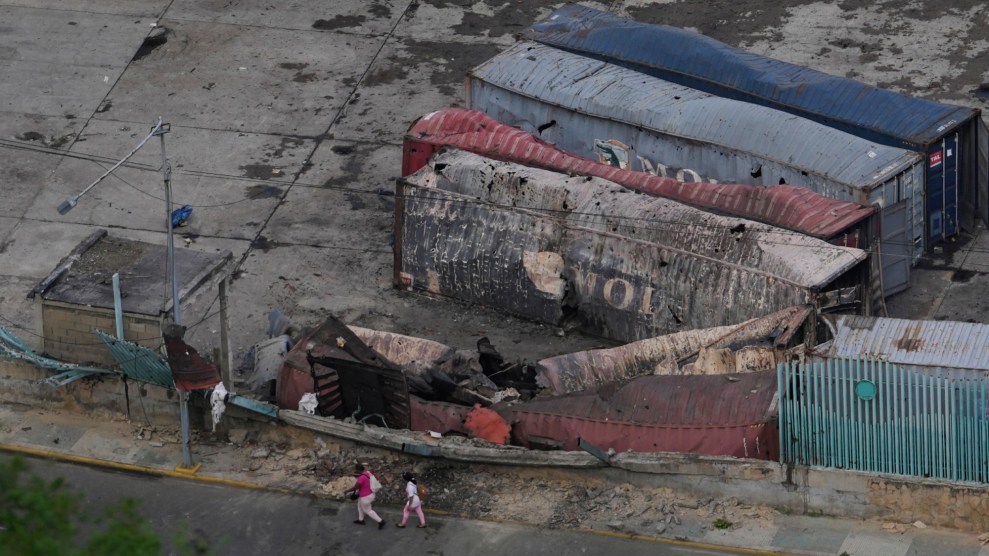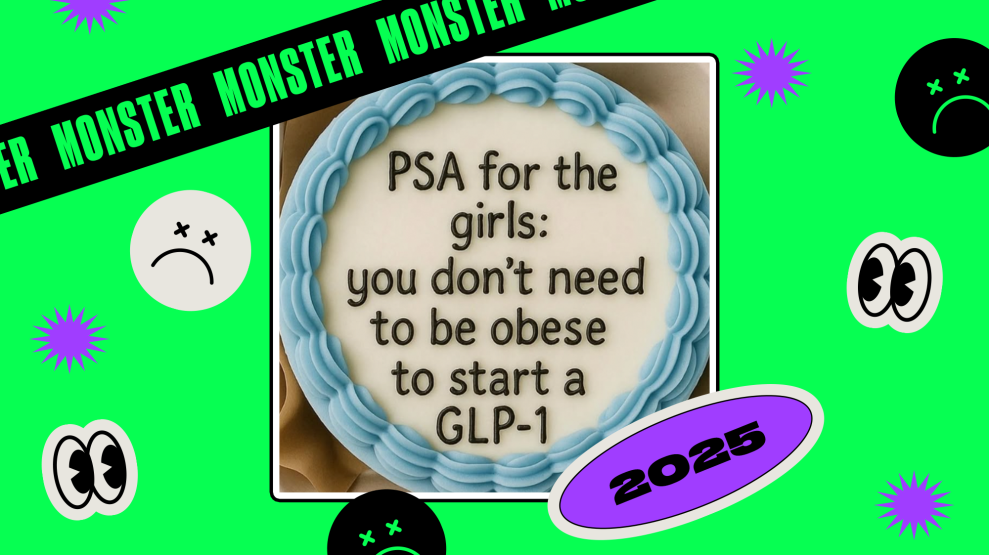In San Francisco’s tony restaurants, one can feast on perfectly seared ahi tuna or sample butter drizzled mahi mahi accompanied by a $50 bottle of wine. Just across the Bay, however, is a whole different world — fishermen in Richmond live on toxic fish caught from a place that is recognized as an Environmental Protection Agency Superfund site.
High school student ambassadors from the Ma’at (pronounced my-OT) Youth Academy are trying to increase awareness among these fishermen of the dangers of eating certain fish from this area. In 2001, the youth designed a study investigating the fishing habits and fish consumption among the local population in Contra Costa County. Seventy percent of the anglers surveyed were Asian, African American or Latino, and 73 percent regularly ate fish caught from the bay, including bass and white croaker (kingfish), both of which appear on fish consumption advisories.
Sharon Fuller is the executive director of the Ma’at Youth Academy and a lifelong Richmond resident. Fuller founded the Academy in 1994, after taking stock of conditions in her community, where a disproportionate number of toxic-emitting facilities are located, including some 350 facilities in the “Iron Triangle” between the cities of North Richmond, Parchester Village and San Pablo. “Through looking at more pristine parks outside of our communities, I began to ask why don’t those same conditions exist in our home,” said Fuller, who was compelled to research pollution levels and then distribute the information to the community.
In 2004, Fuller was named Woman of the Year in California’s 14th District. She spoke with Mother Jones from her office in Richmond, Calif., about the difficulties of getting fishermen to change their eating habits, the predominance of research on contaminated fish but little that focuses on people, and the difference between traditional environmental groups and the environmental justice movement.
MJ: Why is there a lack of awareness about contamination in these coastal communities?
SF: Educational outreach efforts do not address low-income communities or communities of color. Our focus is getting information to folks who we believe are not getting the information. A lot of the communities in Contra Costa county and Alameda county are coastal. They have large populations of subsistence fishing folks. The public health advisories are focusing primarily on commercial fish, not sports fish or recreational fish. We realized that was an area that needed additional work and educational outreach. We’re focusing on the populations who are fishing out of the bay, who are going to farmer’s markets, who are eating canned tuna.
MJ: Is contaminated fish a big problem in Contra Costa and Alameda counties?
SF: It’s a big problem in California. The mercury issue is a huge legacy in California, but it comes from the mining industry. The national debate is talking about mercury being emitted form coal-firing plants, so California is completely out of that debate. We look at other sources of mercury and how it’s still reaching into the environment from decades of prior mining activities, how it is accumulating through the food chain and still getting into the diets of human population. There’s a lot of research that looks at the aquatic species, but there’s not a lot of research looking at the impact on people. In a lot of the water bodies throughout California, there are advisories about contaminated fish or fish with elevated contaminant levels. But the advisories are not readily accessible. One of the sites in Richmond is a Superfund site, which requires extensive clean-up and is on a priority list for clean-up. It’s one of the few sites that remains available to the public to actually fish. A part of their culture and heritage is fishing out of the bay, but it’s one of the most contaminated sites. There were not any signs posted until our organization demanded that folks were made aware of what the levels of contamination were in that area.
MJ: What species of fish are contaminated there?
SF: Surf perch and striped bass are the main two that we’re warning folks about. In the Delta area, it’s the channel catfish. Another one that has high levels of mercury is the white croaker; the street name is kingfish. It’s readily caught in the harbor area or any shallow water body. That’s the fish we really educate folks about because it’s an easy fish to catch, people catch quite a few of them, but it has some of the highest levels of mercury. The national advisory actually advises people to eat white croaker. This is because on the East Coast, white croaker it is fine, but it is not on the West Coast. These advisories really have to look at the regional advisories or even advisories to local sites because often times they’re very different. We try to get folks to really look at advisories specific to the region.
Another concern with national advisories is that they have recently changed the food pyramid to really emphasize the benefits of eating tuna without clarifying that different types of tuna have higher levels of mercury. That’s the type of information we’re trying to get out: there are different types of fish that people can buy and different locations you can fish in to reduce your exposure. Our message is not for people not to consume fish. People would not even listen to that. But there are healthy alternatives for the short-term. The long-term goal is to create water bodies that are free of contaminants or that have greatly reduced the amount of contaminants. When you look at the state water board that proposes a 25-year mitigation plan, it’s really not in the best interest of folks, when you don’t really address immediate needs. Twenty-five years is way too long.
MJ: What has been the reaction of those fishers whom you are trying to make aware of the contaminants in the bay?
SF: The folks who are fishing daily are appreciative to know which ones may have more contaminants than others, which ones they’re catching are really healthy, which sites they have reduced levels. A lot of them might not know so much about what types of contaminants are in there, but they know some areas are more polluted than others. The majority of people we’re working with are not convinced that the contaminants are high enough to cause any damage, and that’s our concern. Even those that we have informed about contaminant levels are still not convinced that they need to change their behavior. There’s not a national message that says this can cause chronic damage to your system. It’s a little harder to convince folks about the long -term effects.
One thing we do is give people healthy alternatives. They can have a variety of fish and not focus on one fish. At a policy level, we’re working on folks having access to testing their total body burden through a statewide biomonitoring program that’s being proposed by state Senator Deborah Ortiz. This would allow folks to go into a clinic, have their hair or blood tested to determine the level of contaminants in their body to see if they’re being exposed to too much contamination. This is third year we’re trying to get it passed. It got all the way to the Governor’s desk last year before he vetoed it.
MJ: What are African Americans’ relationship to oceans and rivers and lakes?
SF: African Americans have grown up living near water bodies – bayous, sloughs, and rivers – and having those bodies sustain them. It’s no great leap to have the same thing when folks migrated from the South to the West Coast. They still rely on the fish and the land to sustain them. It’s expected that those resources are healthy. It’s a natural transition that a large portion of their diet would come from the ocean, the sea, creeks, and bays. It’s just a part of the culture.
MJ: What are some of the fish consumption studies your group has done?
SF: We wanted to find out what people knew and who was fishing. We went around to the more popular local fishing spots in Contra Costa county, and surveyed folks to see if they were aware of the public health advisories, what kind of fish they were catching, how often they fished, and what they did with the fish after they caught it. In the first year, we found that they weren’t aware of the advisories or of the alternatives they could choose to fish. The second year, there was more awareness, but still an unwillingness to change behavior. It goes back to it’s just a part of their culture, a part of their life.
Most of anglers were men, and the men were not aware how the fish meals are prepared. Another piece of our research will next focus primarily on the women who are responsible for preparing the meals and finding out the nutritional habits of the family, which the anglers couldn’t provide.
MJ: Is it difficult for the students to engage with these issues?
SF: This work is very easy because it’s just an extension of folks’ lives. We do work that is directly related to the students’ lives, the families’ lives, the community’s lives. We help provide are skills for critical analysis of their surroundings. This study to reduce women and children’s contaminants from fish consumption was originated by students, not program coordinators. They wanted to do it because lot of their families fish in the Delta and the bay. They thought this was a great lesson to take home, and many of them did. We got lots of calls from parents who want to learn more because they weren’t aware of the advisories, even though they’ve been in place since 1994. But, the advisories are page 58 of a 60-page document, and not a lot of people get to page 58 of the Fish and Game Regulation Guide.
MJ: What skills are students taught?
SF: In terms of monitoring skills, we’re getting them to acknowledge that they actually have some expertise in that area. We’re teaching them the concept of environmental indicators — if they are playing in a creek, and they notice a frog that has an extra foot or a tadpole that has two tails, they are noticing a mutation that is abnormal. That is telling them something about the environment. We’re getting them to recognize that they are the ones who are observing conditions in the environment. They are being made aware of how to link it to the quality of their community, contrasting it with more pristine areas like the Marin Headlands that is teeming with biodiversity versus an area that is inundated with various contaminants that can only sustain species that are pollution-tolerant.
What we really emphasize is environment goes beyond what is most traditionally known as wildlife and wilderness areas. Your environment is wherever you are. A lot of urban and low-income communities could be completely asphalted over, which doesn’t allow for the percolation of rain and storm water to be naturally filtered before it goes out to the bay. The students are working on how to increase vegetative surfaces to act as natural filters that pull out the contaminants and metals before it actually reaches the creeks and the bay. Students have transformed barren hillsides into an oak grove does just that. It’s not only aesthetically pleasing, but it also improves the watershed.
MJ: You have said that most environmental education programs focus on wildlife and wilderness areas, even though 50 percent of the world population and 70 percent of the US population live in cities. Why do you think urban areas are overlooked in these programs?
SF: Traditional environmental agencies don’t even acknowledge the issues of environmental groups that are primarily folks of color. What the environmental justice groups are looking at is not what’s on the radar of traditional environmental groups. What our organization is looking at is nothing new; we’re not reinventing the wheel. It’s just that the areas we’re concerned about are not being covered. Even these issues aren’t being covered in the main article in Mother Jones. It’s looking at the big picture, aquatic species, and not looking at the subsistence fishing folks who are doing recreational fishing on a daily basis and how that could be impacting their lives. These areas can be completely ignored because they’re not picked up by media. Contaminants in fish or communities have been a long-term problem, but they’re not within the definition of what traditional environmental concerns are for larger environmental groups. Our messages are there, but it’s whether people want to hear them.
















